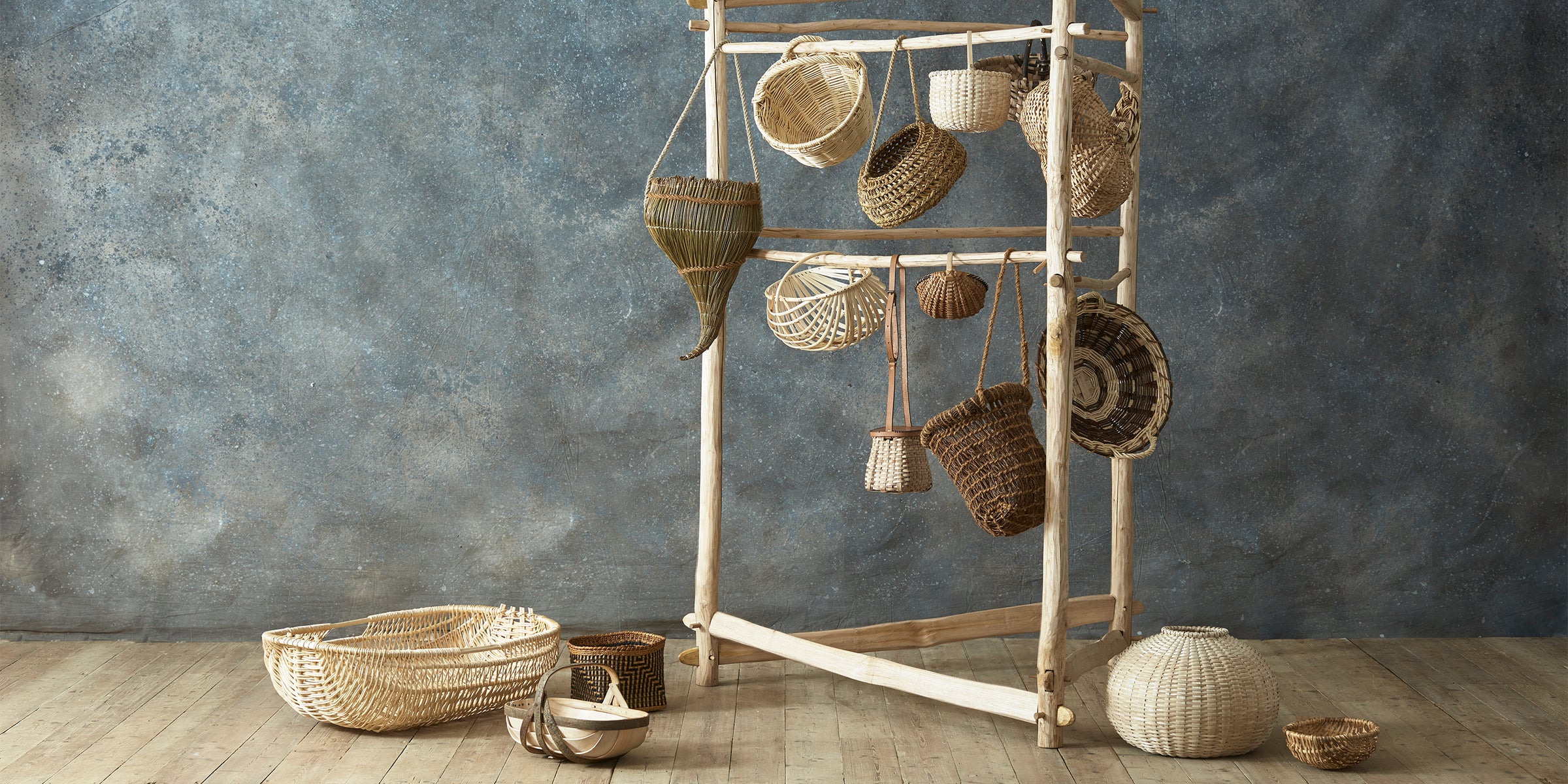
PROCESS

Are you 18 years old or older?
Sorry, the content of this store can't be seen by a younger audience. Come back when you're older.
Hilary Burns MBE is probably the only professional basket maker in the UK researching and recreating the technique of scuttle-work basketry; thin pieces slats of wood, cleft and shaved down from ash/oak/chestnut logs, and closely woven over with willow. This is a practice which appears to have disappeared in the UK at around 1930.
Scuttle-work is said to have originated with the Romans, not surprising then that the few remaining examples found in museums originated in areas where the Romans have been. The resulting strong baskets were mainly used in agriculture, particularly the essential processing of grain, mainly wheat. Different forms are found in France/Europe and England, the most iconic of these is the winnowing fan or van, that has given rise to the French word for basketry – vannerie.
This basket is loosely modelled on a basket form in ‘The Complete Book of Baskets and Basketry’ by Dorothy Wright. Hilary has replaced the wire binding of the top with skeined willow wrapping. Skeins are made by splitting willow rods lengthways and shaving them down to remove the pith, turning them into ribbon-like lengths.
Material: Cleft chestnut, white willow.
Dimensions:
cm: Length 45cm, Width 38cm, Height 35cm
inches: Length 17.7in, Width 14.9cm, Height 13.8in
Care Instructions: Dust with a feather duster

A specialised mix of materials and tools is required: An A-frame and for for splitting logs down, a shave horse for producing the resulting smooth splints, a particular rapping iron to achieve the tightly packed weave between the splints, as well as normal basketry tools.
Hilary used chestnut splint woven with white and brown willow, replacing the wire tie around the top with hand-made cordage, made from willow bast boiled in alkaline ash-water.






